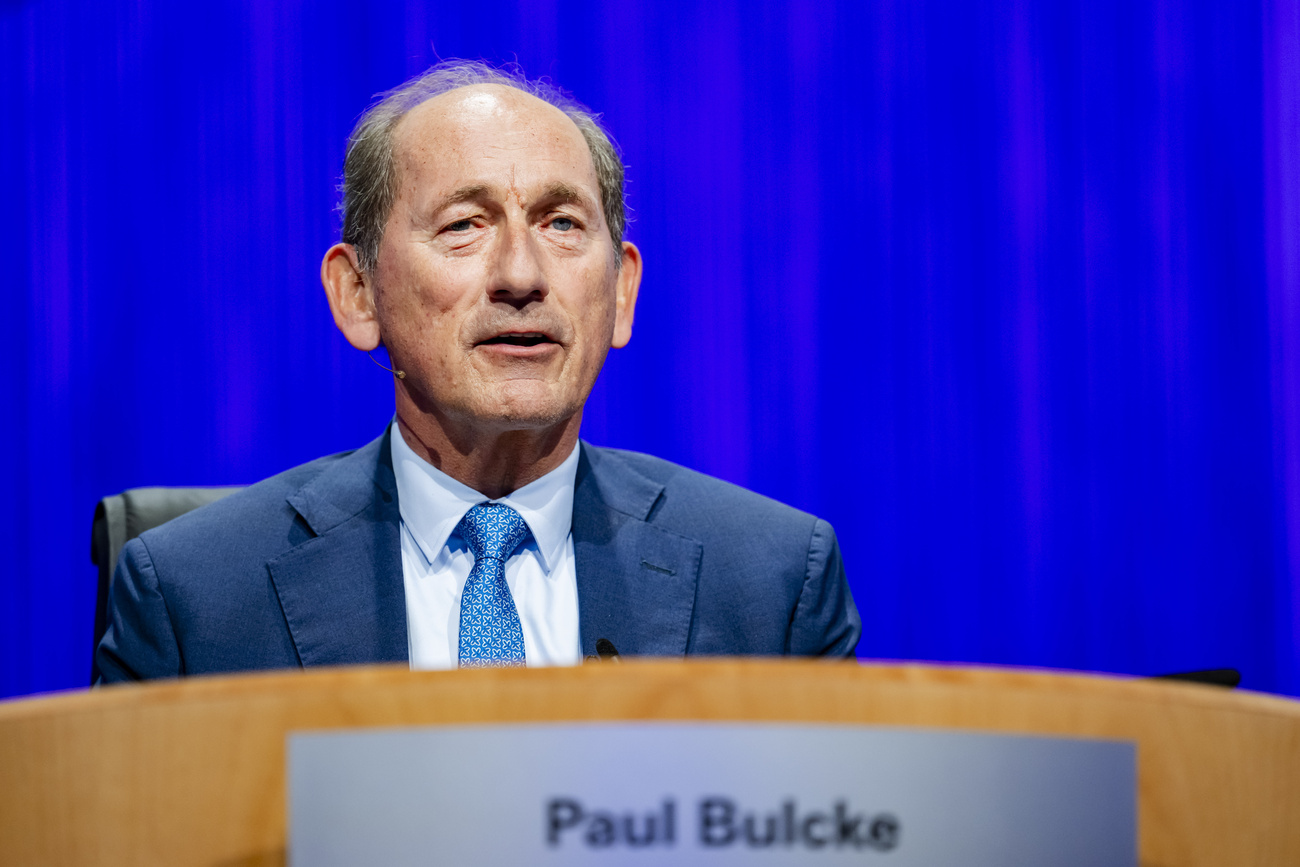
Glencore Investors Question Strategy as Copper Bonanza Eludes Miner
(Bloomberg) — Institutional investors in Glencore Plc have grown increasingly frustrated with the commodity giant’s underperformance, with several large shareholders privately voicing their disappointment and questioning the company’s strategy.
Glencore’s shares have dropped 30% in the past three years, lagging its closest peers, as a plunge in coal prices has hamstrung its most profitable division. There’s not much Glencore can do about that, but the weakness is sharpening the spotlight on questions about things the company does control, including around how it runs its mines and smelters, and its broader strategic plan.
At a time when miners around the world are rushing to produce more copper, Glencore’s copper production is expected to drop for a fourth straight year. It’s being forced to consider shutting or selling struggling smelters, and Glencore itself hasn’t reported a net profit since the first half of 2023.
“There has been a frustration amongst investors, particularly on the operational side,” said George Cheveley, a portfolio manager at asset manager Ninety One, which owns Glencore shares. “Something needs to change in terms of the way they run the company.”
There are some signs of tailwinds. Glencore shares have risen 17% this month as copper prices climbed due to an accident at a massive mine in Indonesia owned by Freeport-McMoRan Inc. Glencore has also scheduled its first capital markets day in three years for December, suggesting it is putting renewed effort into communicating its strategy and copper growth prospects.
The most immediate test will be whether Glencore can meet its annual production forecasts, which would require it to produce about 50% more copper in the second half of the year than it did in the first six months. Some analysts suggest that expectations have dropped so low that simply meeting its forecasts could be seen as a major positive. In early August, the company said it still expected to meet the target for the year.
But investors have bigger questions. Bloomberg spoke with investment managers at eight top-35 shareholders in Glencore, most of whom asked not to be identified discussing views they have not expressed publicly.
The investors all acknowledged that the share weakness is mostly caused by lower coal prices — something that is largely outside of Glencore’s control, and some expressed a willingness to be patient. However, most said they were unhappy with the performance of Glencore’s mines. And several said that the company appears to lack a convincing strategy that doesn’t rely on waiting for prices to recover.
Glencore has flirted with a variety of potential moves to revive its share price, without success. In recent years, the company has tried and failed to negotiate at least two mega deals — with rivals Teck Resources Ltd. and Rio Tinto Group; it announced and then reversed plans to spin off its coal business; it considered moving its main listing to New York from London, before backing off that idea as well. Most recently, Bloomberg reported that the company has held talks about selling a controlling stake in its biggest African copper mine, an asset that has been dogged by operational setbacks.
This month, Glencore, which has long prided itself on being the sector’s canniest dealmaker, found itself on the sidelines as rival Anglo American Plc announced a deal to buy Teck and create a new copper-mining champion. Glencore’s own copper mines, by contrast, will produce roughly 40% less copper this year than they did in 2018, if they meet their targets.
Glencore declined to comment on this story.
To be sure, Glencore’s rivals have also had their share of setbacks — in several cases directly tied to their efforts to expand copper production. Ivanhoe Mines Ltd. and Teck, for example, are both struggling with operational problems at huge new copper projects.
And Glencore has dug itself out of deeper holes before. During the 2015 commodity crisis, the company was forced to suspend its dividend and sell shares to prop up the company. But a rebound in commodity prices then saw its share price surge some 300% over two years.
Today, Glencore continues to offer investor returns — it pays a regular dividend, and announced a new $1 billion buyback in July. The average analyst forecast is for a net profit in the current financial year. The company’s two largest shareholders are former Chief Executive Officer Ivan Glasenberg and Qatar’s sovereign wealth fund, which together hold 19%. Glasenberg is supportive of the company’s strategy and management, people familiar with the matter said.
Glencore says it can return to producing 1 million tons of copper a year by 2028 as it improves its mines, and has filed applications for $13 billion of new copper projects in Argentina. It also has unveiled plans to cut $1 billion in costs and has raised its trading profits goal for the first time since 2017.
When rival miners have found themselves under pressure in recent years, they have responded with large-scale strategic shifts to reset their businesses. Most notably, Anglo American was forced to radically restructure last year after setbacks at its copper operations.
Merger Mania
Among the company’s main big ideas appears to be one that it already tried last year: being taken over by larger rival Rio Tinto. The two sides discussed a deal last year, but failed to reach an agreement on valuations, Bloomberg has previously reported.
Glencore continued to work behind the scenes with its bankers on what a potential deal could look like and management has taken steps to prime Glencore to be able to move quickly, according to people familiar with the matter. CEO Gary Nagle has repeated in private conversations that it’s a deal that should get done — describing a Rio-Glencore tie-up as the most obvious deal in the industry.
Still, with Glencore’s share price weaker relative to Rio now than it was in January when Bloomberg first reported the aborted talks, it’s doubtful that a deal would be appealing to Glencore shareholders until the two companies’ relative fortunes change.
That leaves Glencore hoping for a recovery in the coal price. As its rivals moved to exit the business over the past decade, Glencore doubled down on the dirtiest fuel, and is now the biggest shipper of energy coal and among the top producers of steelmaking coal.
But while coal has generated massive profits for the company over the years, those earnings have tumbled as rising supply outpaces demand, sending prices plunging – and with them, Glencore’s share price.
Lost Swagger
The pressure is being felt throughout the company — robbing Glencore of some of the swagger that it has been known for since it first became a public company in 2011. Back then, Glasenberg brought a new swashbuckling brashness to the global mining scene, unleashing scathing public criticism of his rivals’ missteps, while the powerful trading business that traced its roots back to industry godfather Marc Rich gave Glencore unparalleled insight and access across the globe, often operating where few competitors would dare to follow.
Today, Glasenberg and his lieutenants have retired. The trading business, once seen as the pinnacle of a career in the commodities industry, has seen senior figures quit or defect to cash-rich energy trading rivals who are expanding into metals.
“When they arrived on the scene everyone considered them the masters of the universe,” said Ben Davis, an analyst at RBC Capital Markets. “Yet that short-term market knowledge has not necessarily meant long-term returns. They have not always been proved right.”
Jason Kluk, Glencore’s head of nickel and ferroalloy trading, left the company in November, while Sam Imfeld, a longstanding trader in Glencore’s aluminum and alumina team, agreed to join Vitol Group earlier this year. Bloomberg reported last month that coal-trading head Ruan van Schalkwyk is retiring, days after it disappointed investors with weak results for the first half of the year that included one of the worst performances from its energy- and coal-trading unit on record.
And other senior traders have also been targeted by rivals. Head of iron ore trading Peter Hill and Jyothish George, who was since promoted to head of metals, iron ore and coal trading, both had job offers from Vitol last year, before deciding to stay at Glencore. People close to the company argued that its trading strength comes from the volume of metal it markets and its network and reputation, rather than specific individuals.
Glencore’s smelting business is also under pressure. Last month, the chief financial officer of Glencore’s zinc business, Gavin Heale, emailed deputies warning about the severity of the situation, according to a person familiar with the matter. He said costs at the company’s Horne and Asturiana smelters “look to be out of control” and warned that some businesses looked like they needed to be shuttered.
Copper Flops
But the central concern for investors is Glencore’s operational performance as a miner. The company has repeatedly missed or lowered production targets, and has seen output fall across nearly every part of its business, producing less copper, zinc and nickel than it did five years ago.
Part of the reason for the copper production decline is that it has sold some of its more troublesome mines.
But its ability as an operator is taking on greater significance as Glencore increasingly focuses on its plans to invest in massive copper projects in Argentina.
“It’s difficult to convince the market you can grow copper production when it’s falling every year,” said Cheveley at Ninety One.
Now all eyes are on the company’s production results for the rest of this year. Even if it meets its targets, 2025 production would be as much as 19% lower than Glencore’s original predictions, when it outlined three-year production forecasts in 2022.
The market is skeptical: the average analyst estimate is that copper production will come in below Glencore’s own forecasts, despite assurances from the company that it will achieve its guidance.
“The second half is hugely important,” said Davis at RBC. “Expectations are at rock bottom — even if they hit the bottom of guidance, they are going to exceed expectations.”
–With assistance from Sybilla Gross, Dinesh Nair and Mark Burton.
©2025 Bloomberg L.P.




































